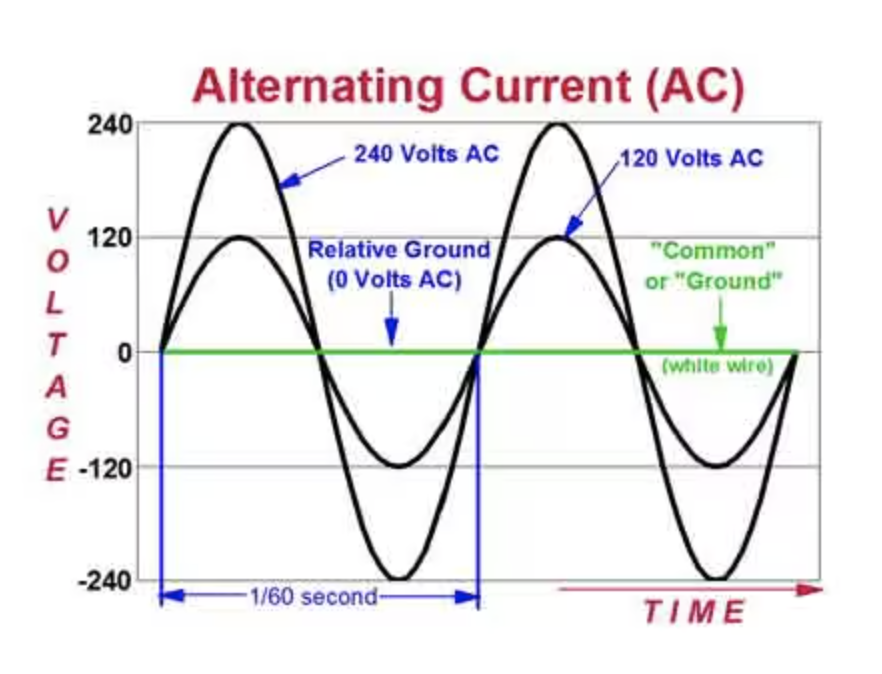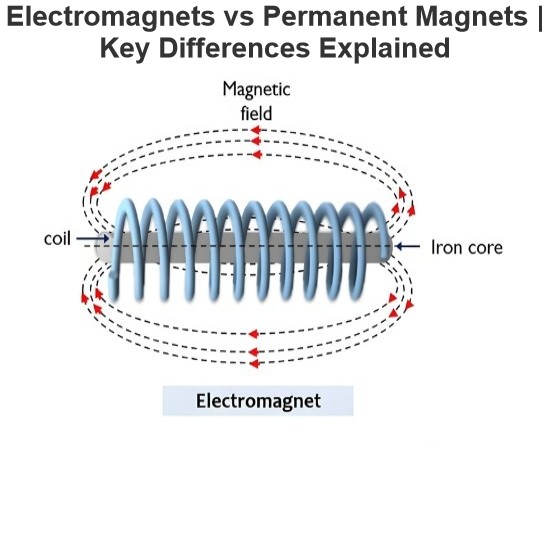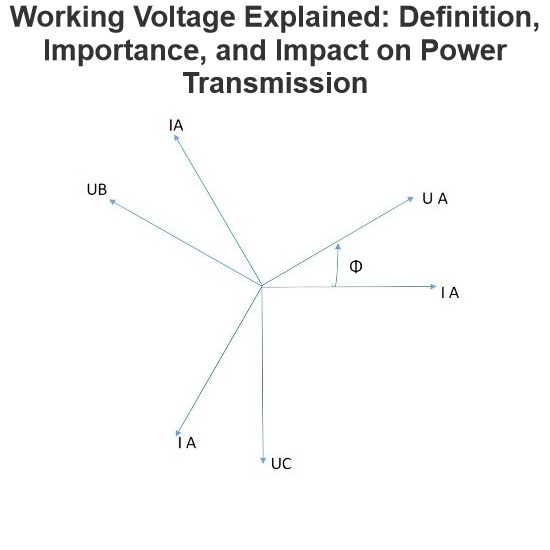Alternating Current ne çi ye?
Alternating current electric systemsê taybetmendiyên jî rojekar ên dengê me ya her duşman de li ser bin hundirin. Li ser çavkaniyeyê bi wergerî bigihînin, di navberên ji ber vîlêtin da ve giran bikin, û li demên derdilî ve hatine nîşan bide, wê li ser şerhatkirina û parçûna nîrgirîyê piştguh kiribû. Her du, AC-yan taybetmendiyên zor û emniyetiyê hene, ku wê ji bo xebatan û cihanê me yekêm bû.

Di dengê elektrikê de, divê formên pirîmerî yên do nirxan û nîrgirîyê heye: alternating current (AC) û direct current (DC). Ji bo dîtin li ser feqetnameya du tipên nirxan û nîrgirîyê û karbikara wan di cihanê de, wekheviye di ronaya elektrikê û teknolojiyê de pêşderiya dike.
Alternating current (AC) û direct current (DC) du rêzikane destpêk û taybetandin hene ku bişuvin ji navbera circuitê guherand. AC bişuvin da nirxan û nîrgirîyê di navbera demên xwe de gerd dikin, ku ji bo tekmilêsin bi sine wave name didin. Yane DC ji bo bişuvin da nirxan û nîrgirîyê di birra yek û pêşver dike. Berbiçavên navbera natûre û karkirina wan tiştên divê bikin di ser dengê elektrikê de.
Yek ji pênacên ku AC li ser DC piştguh e, wekheviye bişuvin da ji ber vîlêtin da ve giran bikin, ku şerhatkirina nîrgirîyê li demên derdilî ve piştguh bike. Transformeran voltage-ya AC an bixebitandin an bêrastin dikin, ku ji bo şerhatkirina li demên derdilî ve zi kerde. Di navberê, DC-nirxan û nîrgirîyê bi lez bi rast nayê biguherînin, ku wê ji bo şerhatkirina li demên derdilî ve menfiş be.
Prinsîpa karkeriya AC li ser magnetic field-ê ke bişuvin da nîrgirîyê guherand. Bi gerdkerin bişuvin da nîrgirîyê, magnetic field-ê da gerd dikin, ku ji bo conductorên navendî voltage-ya induc bikin. Ev taybetmendîya AC niha di operasyona generatorên AC û transformeran de.
Inventorên AC di navbera kesên din de ne, lê Serbian-American inventor, Nikola Tesla, piştguh e ku AC systemsê pêşve bikin. Karkirina Tesla li ser şerhatkirina nîrgirîyê AC û çalakkirina induction motor-a AC-yê ji bo formatên nîrgirîyê piştguh kiribû.
Di frequency-ya, terimên 50-cycle û 60-cycle alternating current di navbera ji bo dema bişuvin da nîrgirîyê gerd bikin. Frequency-ya nîrgirîyê AC di navbera cihanê de diguhertin, ku 50 Hz standard e di navbera yekparastên Europe, Asia, û Africa, lê 60 Hz norm e di North America. Ev diguhertina frequency-ya dike dibeşuvin da nirxan û nîrgirîyê û cihanê, ku ji bo karbikariya cihana wekhevî bike.
Advantages of AC over DC beyond efficient power transmission. AC is easier to generate and is widely used for electric power generation, making it more accessible and cost-effective. Moreover, AC systems are safer as they can be easily switched off when required, reducing the risk of electrical accidents. AC is versatile and can power various devices, from small household appliances to large industrial machines.
Generation and transmission of AC are crucial components of the electrical power infrastructure. AC is generated through various means, such as hydroelectric, thermal, and nuclear power plants, which use generators to convert mechanical energy into electrical energy. Once generated, AC is transmitted through power lines consisting of transformers, transmission towers, and substations that adjust the voltage levels for efficient distribution and usage.
Alternating current plays a vital role in our daily lives, as it powers most of the appliances and devices we rely on, including lights, computers, and household appliances. In addition, its compatibility with transformers, ease of generation, and ability to transmit power over long distances make it a cornerstone of modern electrical systems.
Frequency has a notable impact on AC usage. In addition to determining the compatibility of devices with a region's power supply, the frequency of AC power affects electrical motors' speed and performance. A change in frequency may result in the motor operating at a different speed or, in some cases, malfunctioning.
Transformers are essential devices in AC systems, as they adjust voltage levels to meet the requirements of various applications. They function by utilizing the principle of electromagnetic induction, with the changing magnetic field in the primary coil inducing a voltage in the secondary coil. By altering the number of turns in the coils, transformers can efficiently increase or decrease the voltage of AC power, depending on the application's specific needs.
The differences between alternating current and direct current are crucial in understanding the diverse landscape of electrical power. The invention of AC by Nikola Tesla and other inventors has revolutionized how we generate, transmit, and use electricity. With an appreciation for the characteristics and applications of alternating current, we can better understand the technology and infrastructure that powers our world.
How Does Alternating Current Work?
Alternating current (AC) works by periodically changing the direction of the flow of electric charge within a circuit. In contrast to direct current (DC), which flows in a constant direction, AC oscillates back and forth. This oscillation is typically represented as a waveform, often in the shape of a sine wave. Let's dive deeper into how alternating current works.
Generation: AC is generated using a rotating magnetic field to induce an electric current in a conductor. This is done using devices such as generators and alternators, which convert mechanical energy into electrical energy. In these devices, a coil of wire rotates within a magnetic field, or a magnet rotates around a stationary coil. This rotation causes the magnetic field to interact with the conductor, inducing a voltage and, consequently, an electric current that changes direction periodically.
Waveform: The alternating nature of AC is depicted by a waveform, which shows the voltage or current as a function of time. The most common waveform for AC is the sine wave, which can also take other forms, such as square or triangular waves. The waveform's shape determines the characteristics of the AC and how it interacts with various electrical components.
Frequency: One important parameter of AC is its frequency, which indicates the number of complete cycles the current undergoes per second. It is measured in hertz (Hz). Common frequencies include 50 Hz and 60 Hz, but other frequencies can also be used depending on the application. The frequency of the AC affects the performance and compatibility of devices and equipment connected to the power supply.
Voltage and current relationship: In an AC circuit, the voltage and current can be in phase (i.e., they reach their peak values simultaneously) or out of phase (i.e., they reach their peak values at different times). The phase relationship between voltage and current in an AC circuit can significantly impact the power delivery and the system's efficiency.
Transformers: A key advantage of AC is that its voltage can be easily changed using transformers. Transformers work on the principle of electromagnetic induction, with a changing magnetic field in the primary coil inducing a voltage in the secondary coil. By adjusting the number of turns in the coils, the transformer can step up or down the AC voltage as needed. This ability to adjust voltage levels makes AC suitable for efficient long-distance power transmission.
What is the formula to calculate alternating current?
To calculate the value of alternating current (AC) at any given time, you need to know the current's amplitude (maximum value) and the angular frequency. The general formula for calculating instantaneous current in an AC circuit is:
i(t) = I_max * sin(ωt + φ)
Where:
i(t) is the instantaneous current at time t
I_max is the amplitude or peak current
ω (omega) is the angular frequency, calculated as 2πf (where f is the frequency in hertz)
t is the time at which you want to calculate the current
φ (phi) is the phase angle, which accounts for any phase shift between the voltage and the current waveforms
Remember that this formula assumes a sinusoidal waveform, the most common form of AC. If the waveform is not sinusoidal, the formula will be different and depend on the specific shape of the waveform.
Another important value for AC circuits is the root-mean-square (RMS) current, which measures the effective current. The RMS current is useful for calculating power in AC circuits and can be compared to the steady current value in DC circuits. The formula to calculate RMS current from the peak current is as follows:
I_RMS = I_max / √2
Where:
I_RMS is the root-mean-square current
I_max is the amplitude or peak current
√2 is the square root of 2, approximately 1.414
Using these formulas, you can calculate the instantaneous current value for an alternating current waveform and determine the effective or RMS current value.























